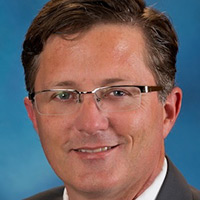David T. Bourgeois is director of innovation and associate professor of information systems at Biola University. Every summer, he teaches an online course at Biola’s Talbot School of Theology called “Digital Ministry.” Additionally, he consults with churches, ministries, and other faith-based organizations on how to use digital tools more effectively. Previously he worked in information systems at Fortune 500 companies in roles that included systems analyst, programmer, project leader, trainer and consultant.
Book Basics
While every church should be doing ministry in the digital age, very few are. Bourgeois provides a guidebook designed to help leaders in any local community of faith “successfully embrace and use digital technologies as a means to fulfill their mission” (p.8). Ministry in the Digital Age is the rarest of helpful books: one I recommend without hesitation to congregations of all sizes, at all levels of digital engagement, and across the theological spectrum. If you care about your congregation, give a copy to someone your pastor or a key leader tasked with innovation.
The era when digital ministry was focused on providing information — communicating with parishioners via e-mail and creating a website containing basic information about a congregation’s ministry and mission — ended some time ago. Today, digital ministry is all about relationship. Only by moving beyond an approach that emphasizes technology and tech tools to an approach that integrates technology, people and process can congregations craft and continually refine digital ministry frameworks suitable for guiding their digital ministry endeavors.
I suggest that you read Ministry in the Digital Age
- from cover to cover to understand how the shift from a print society to a digital world is changing everything, why this is especially relevant to faith-based organizations, and how to effectively leverage resources so that a given organization can effectively minister in the digital age;
- chapters five and six (alone) to explore a twelve step process to create a digital strategy; and
- any chapter of interest to benefit from an enhanced knowledge of best practices in digital ministry.
So What?
Far too many congregations throw significant financial and human resources into purchasing and using technological tools because the tools are widely known and “new” rather than taking the time to determine what it is they wish to achieve and then selecting tools that can help achieve those goals. As the number of tools (both free and available for purchase) continues to expand rapidly, the temptation to try something new must always be viewed through the lens of understanding how that new tool may help achieve a specific desired outcome.
- Has your congregation entered the age of relational digital ministry or does it continue to view all things digital as being about providing information?
- Share what you believe to be a “best practice” for effective digital ministry.
David T. Bourgeois. Ministry in the Digital Age: Strategies and Best Practices for a Post-Website World (InterVarsity Press, 2013). ISBN: 9780830856619.
